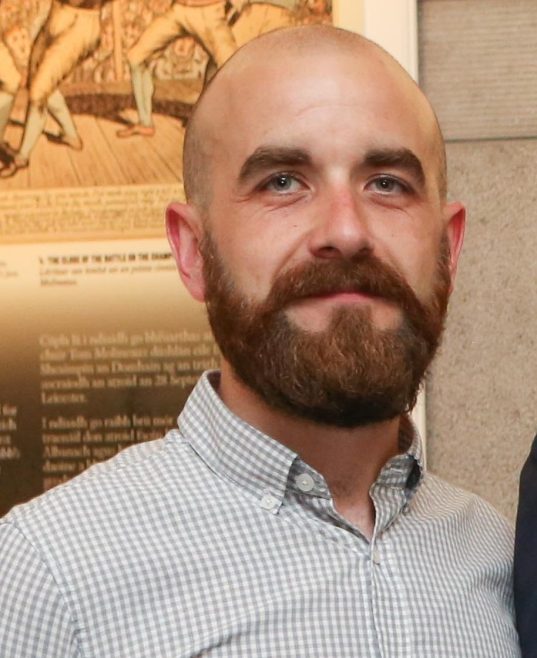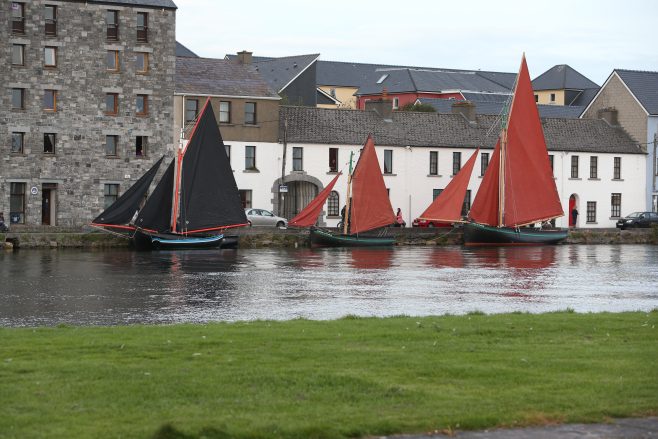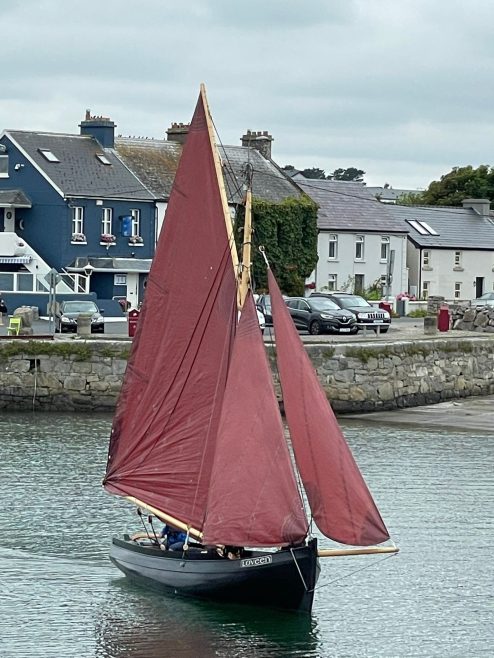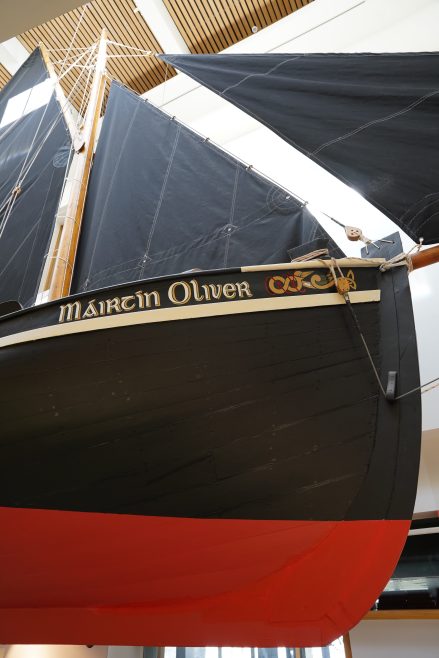Damien Donnellan works at Galway City Museum and has recently completed his MA in Public History and Cultural Heritage. Damien’s research was on the Galway hooker and he kindly agreed to share his work in this latest offering on Traditional Boats of Ireland’s Wild Atlantic Way.
My name is Damien Donnellan, and I work across the Education and Exhibitions departments at Galway City Museum. I recently completed a Master’s in Public History and Cultural Heritage from the University of Limerick, where I wrote a dissertation titled, Interpreting the Galway Hooker: Living Heritage, community collaboration and sustainable heritage safeguarding. Being from Galway City, I was always intrigued by the Galway Hookers. Seeing the work of the Galway Hooker Sailing Club in the safeguarding of these boats’ heritage recently, I was encouraged to focus on their work and the living heritage of the boats.

Damien Donnellan. Image courtesy of Damien Donnellan.
My study initially focuses on the history of the boats and fishing more generally in the Claddagh during the nineteenth and early twentieth centuries. The Claddagh was a subsistence fishing community, and the Hooker was really at the centre of their communal occupation. Over the centuries the community enacted a series of regulations managing the fishery. This allowed for local control of fishing rights, with the aim of managing fish stocks, which in-turn benefitted the community as a whole. As the nineteenth century progressed however, and with the influx of outside fishermen to coastal waters, their claim to these fishing rights saw increased opposition. At the turn of the twentieth century, the community faced many challenges, which led to a declining industry and thus a decline in the use of the Hooker.

Galway hookers moored alongside The Long Walk, Galway City, 2013. Image courtesy of Galway City Museum.
After contextualising the Hooker within the Claddagh fishing industry, I turned my attentions to the Sailing Club and their role in preserving the Hooker traditions. Specifically, I examined their restoration of Loveen, a near century-old vessel. My research focused on ‘Living Heritage’, which is a way of safeguarding both tangible and intangible heritage that is directly tied to communities and the continuity of traditions. Living heritage has four main characteristics: preserving the original function, maintaining community connections, using traditional means to care for the heritage, and continuing cultural expressions. Because these practices focus on the core community, those directly connected with a tradition, it’s crucial to engage those with deep connections to both the Claddagh and the boats. To further understand the importance of the Hookers to the community, and the heritage in a modern context, I interviewed Club Commodore, Ciaran Oliver, and two other club committee members, Tina Concannon and Collete Furey.

The Galway hooker Loveen. Image courtesy of Galway Hooker Sailing Club.
The Club and their work are emblematic of a living heritage approach. Ciaran Oliver has close familial ties to the Claddagh fishing heritage. His great grand uncle, Máirtín Oliver, was the last King of Claddagh to make a living by fishing full-time. The Loveen itself was originally built as a rowboat in 1925 by John Reney. Reney was the boatbuilder of much of the old Claddagh fleet, and his boat, the Truelight, was Máirtín Oliver’s fishing vessel. Connections such as these, as well as the continued evolution of the Hookers, are the essence of living heritage.

The full-sized Galway hooker, the Máirtín Oliver, hangs from the atrium of Galway City Museum. Image courtesy of Galway City Museum.
What initially encouraged me to discuss the heritage of the Galway Hooker through the lens of sustainability and sustainable heritage safeguarding, was the conflict between traditional fishing methods utilising the Hooker, and trawling encouraged by outside actors, which was to have such an impact on the Claddagh community. The living heritage approach, with continuity at its core, and the work of the Sailing Club in their restoration projects demonstrates sustainability in action. Sustainability itself can be defined as the capacity to endure, and this is reflective of the Galway Hooker traditions as a whole. From a fishing vessel and ‘workhorse of the bay,’ its decline and subsequent revival in the 1970s as a racing vessel, and more recently a further resurgence as a leisure boat, the iconic Galway Hooker continues to be enjoyed and introduced to new generations of enthusiasts.
My sincere thanks to Damien Donnellan of Galway City Museum for taking the time to share his research with us.







No Comments
Add a comment about this page